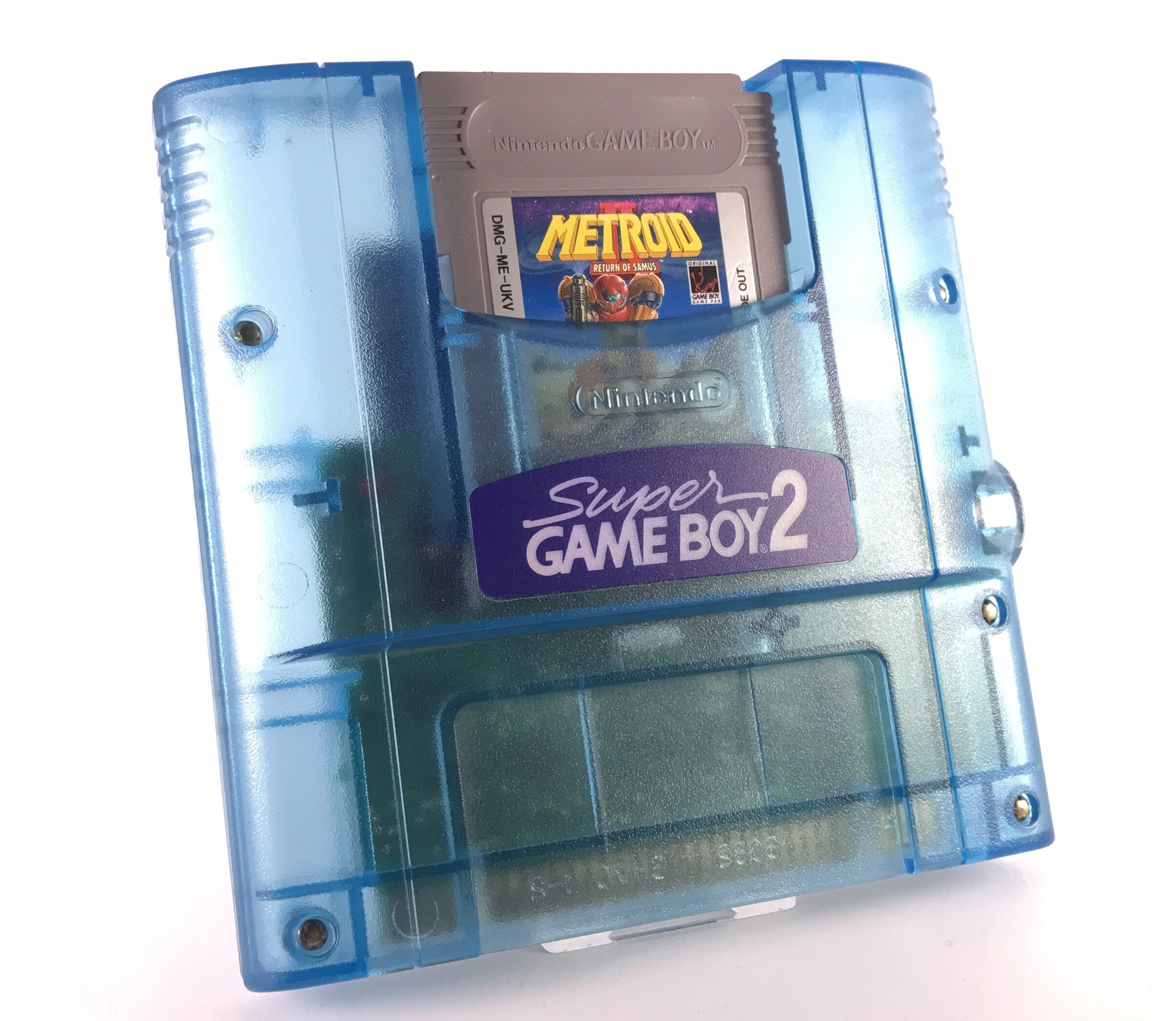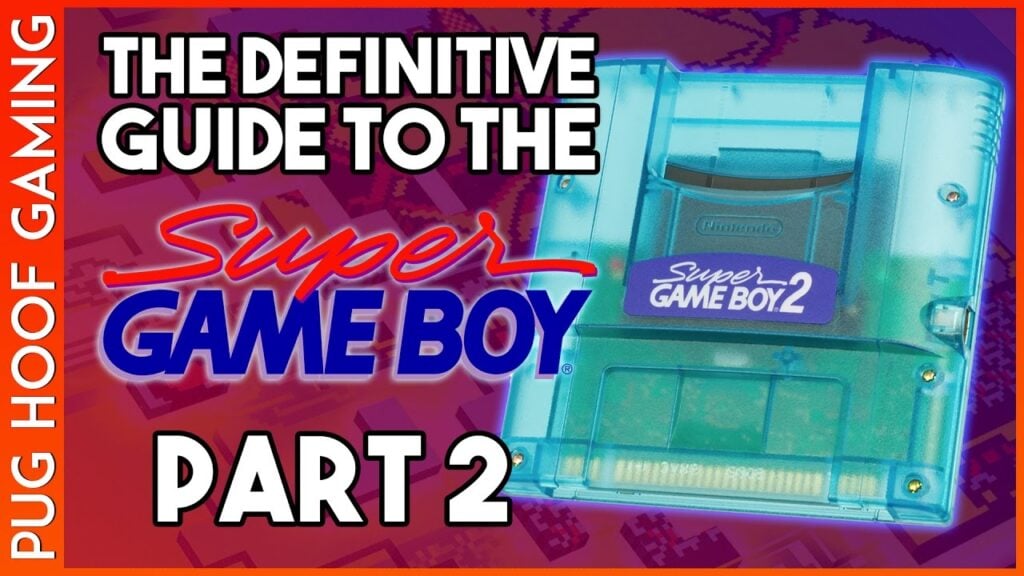What is this strange blue cartridge? Well, it’s the second edition of one of the Super Nintendo’s best peripherals. Stay tuned and find out everything you need to know about the Super Game Boy 2.
Last week I took a look at the Super Game Boy, a Super Nintendo peripheral that allows you to play handheld titles on your television, via Nintendo’s 16-bit console. If you saw that video then you’d know that the SGB was so much more than this, offering audio and visual upgrades to selected games, and plenty more besides.
But what many people don’t realise is that there was a second version of the peripheral that never made its way out of Japan, and its existence is rarely spoken about – Which is a shame, because the Super Game Boy 2 is the definitive way to play GB games on your Super Nintendo.

Released at the very end of the SNES’s lifespan, in 1998; this Japanese-exclusive revision of the Super Gameboy was clearly released in response to the rising popularity of Pokemon. It’s easily distinguishable from the original model, thanks to its awesome transparent blue casing, which just looks so cool, even if it doesn’t fit the look of the Super Nintendo as well as the original model.
The transparent casing isn’t necessarily just to look awesome, as it also allows you to sneak a peek at the two added LED status lights – A red one to indicate power, and a green one to indicate data transfer from the game link connector.
Super Game Boy 2 – Hidden Secrets
Its basic usage is identical to the original SGB, and you can consult my previous video for more information on how to use the Super Gameboy and all the cool things you can do with it, including the various ways the peripheral was used to add extra capabilities to supported games. The Super Gameboy 2’s menus should be familiar to anyone that’s spent any time with the original model, the only difference being the brand new borders that have overwritten some of the old ones. However, there is a cheat code that can be used to bring the old borders back again:
Simply select the black border, exit the border menu and press the following buttons:
L, L, L, L, R
When you next to into the border selection menu, the old SGB Borders will appear and operate exactly as they did on the original Super Game Boy.
As you know, different games are able to display their own personalised borders at any time during gameplay – But there are also a handful of games that feature borders that are only accessible when using the Super Game Boy 2. For example, Tetris DX has this particular border when played on the original Super Game Boy, but when played with a SGB2, this alternative border is displayed.
But that isn’t all in terms of changing borders. Built into the Super Gameboy 2 is a border based on the Gameboy Pocket, and it’s possible to change the colour of that border with the exact same code, which, if you weren’t paying attention, is:
L, L, L, L, R
Seven different colours are available, so you can easily pick your preferred hue. This code can also be used for each of the Super Game Boy 2’s borders, to unlock a screensaver animation for each one, exactly how you could with the original version’s borders.
On the subject of cheats, remember the code in last week’s episode that displayed the credits? Well, that very same code also works here:
L, L, R, R, R, L, L, L, R, R, R, R, R, R, R
The credits are mostly the same, but a different piece of music plays in the background.
With the original model not having a link cable port, Pokefans were, of course, unable to use their Super Game Boys for trading and battling, so this brand new version comes complete with a game link connector, allowing Super Game Boy players to finally link with other Game Boy owners.
Naturally, it works exactly the same way as the game link connector on a real GB – Just plug a link cable from your SGB2 to any compatible Game Boy, and it works exactly as you’d expect. Finally, you can play Tetris with two players, trade and battle Pokemon – And I bet you could even connect two Super Game Boy 2’s together if you happened to have a spare SNES and Super Game Boy 2. But I don’t, so I can’t test that theory, unfortunately!
So, I’ve mentioned a handful of times about the speed differences between the original SGB, and the SGB2. The original DMG system runs at a clock speed of 4.194 MHz approximately. The original Super Game Boy runs at a clock speed of roughly 4.295 MHz, slightly faster than the original system, and the easiest way to tell this is the higher audio pitch. Meanwhile, the Super Game Boy 2 runs at an identical clock speed as the original Game Boy, making for a more authentic experience.
Let’s see that in action, shall we? In this sped-up footage of all three systems, watch the game’s timer. If each system has the same clock speed, this time would be counting down identically – However, you can clearly see that this is not the case. The standard Super Game Boy is running fast enough for the timer to run out well before the other systems. Meanwhile, the Super Game Boy 2 and original Game Boy systems are roughly synchronised.
Something you can probably notice in this comparison that I haven’t spoken about is the aspect ratio of the display. Both editions of the SGB output the Game Boy display at a slightly wider aspect ratio than an original Game Boy system. It’s not overly noticeable, but it’s there, plain to see.
So that’s everything there is to know about the Super Game Boy 2. The addition of the Game Link already makes it an excellent improvement over the original, but it’s ability to play games at the same speed as a proper Game Boy system makes this the definitive way to play Game Boy games via your Super Nintendo console. Of course, the Gamecube’s Game Boy Player is also out there, but that’s another story, for another time.

